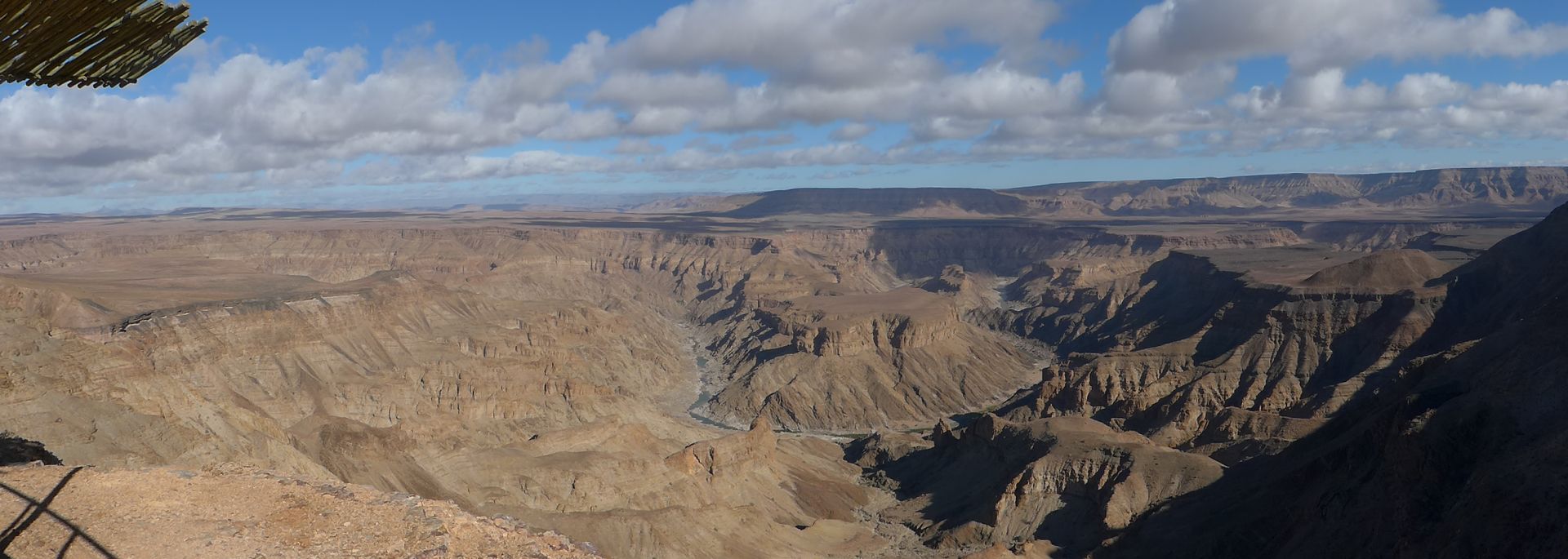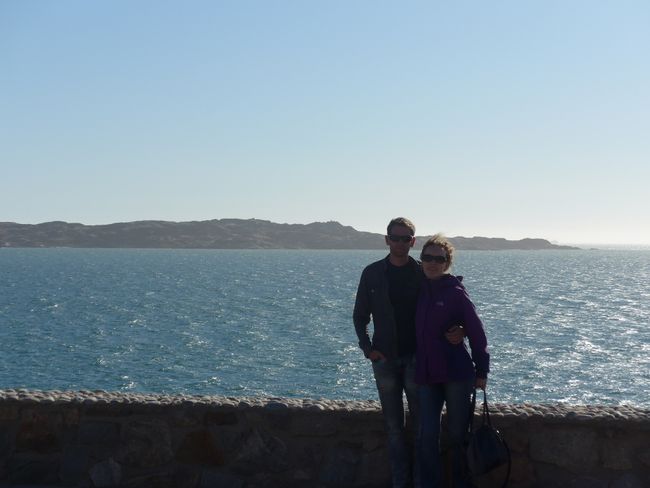Kangaroo Island - Kangaroos and Koalas (Australia Part 10)
MIVOAKA: 25.10.2018
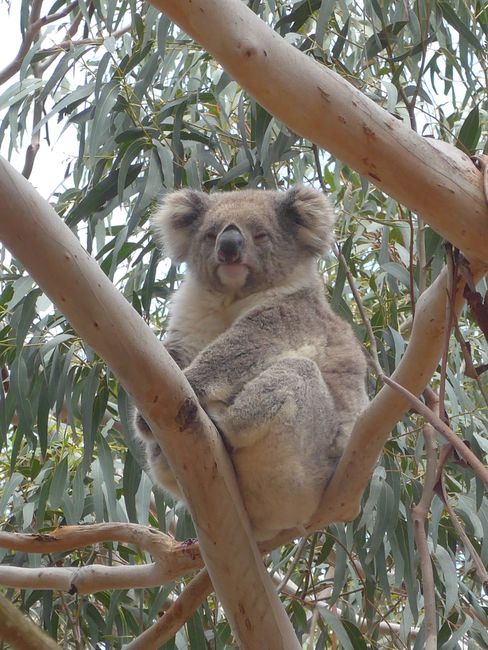
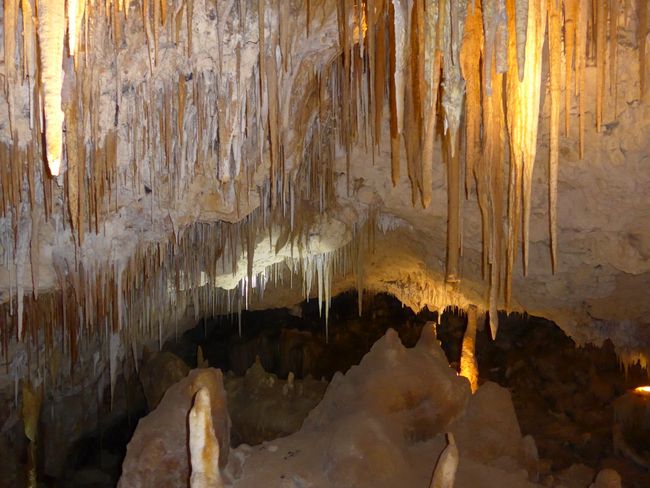
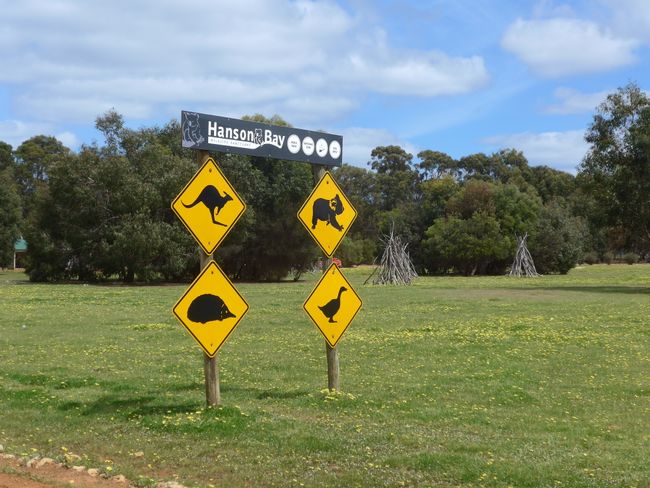
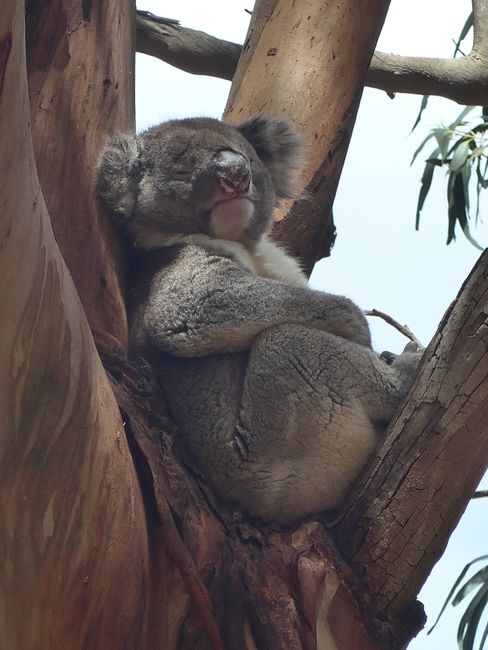
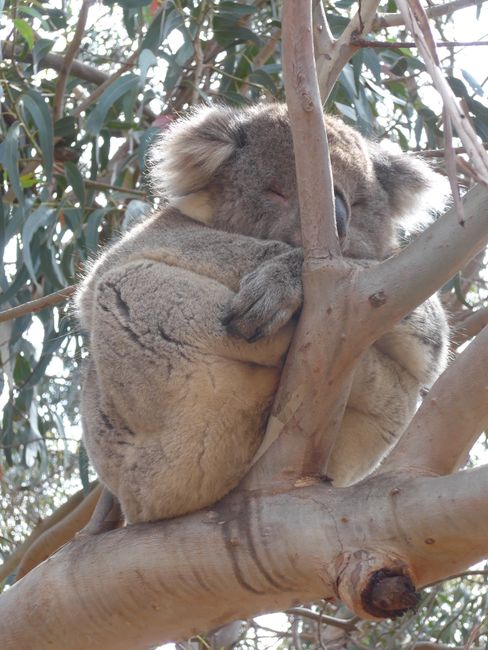
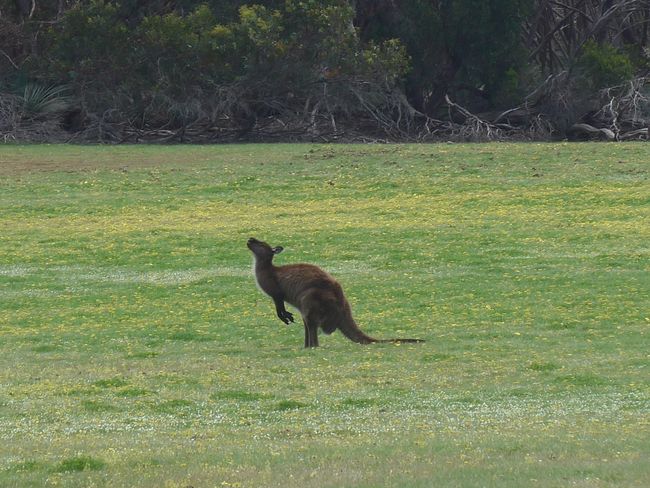
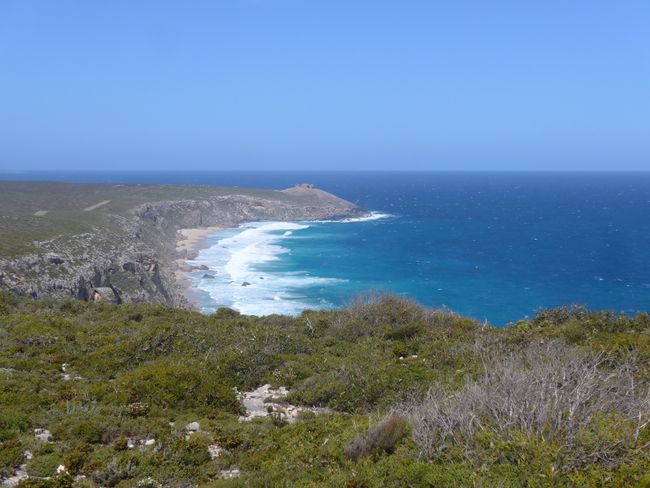
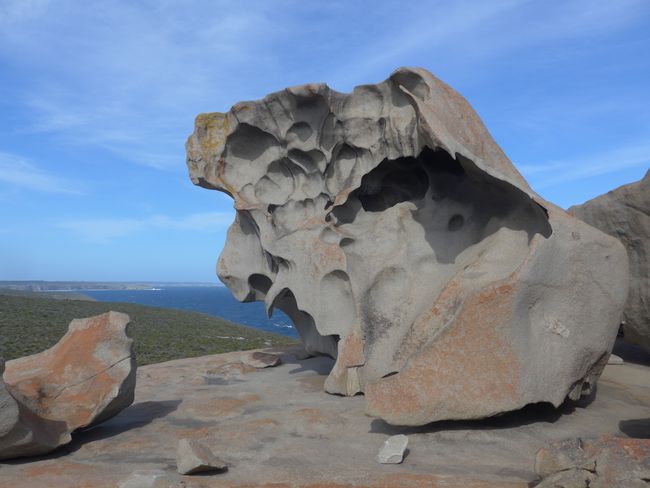
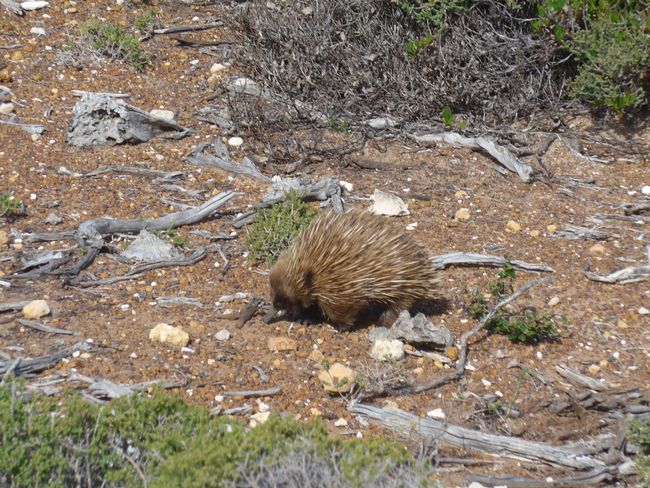
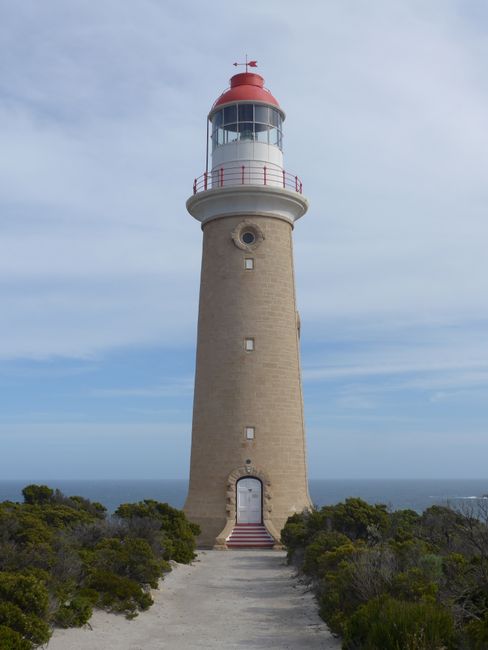
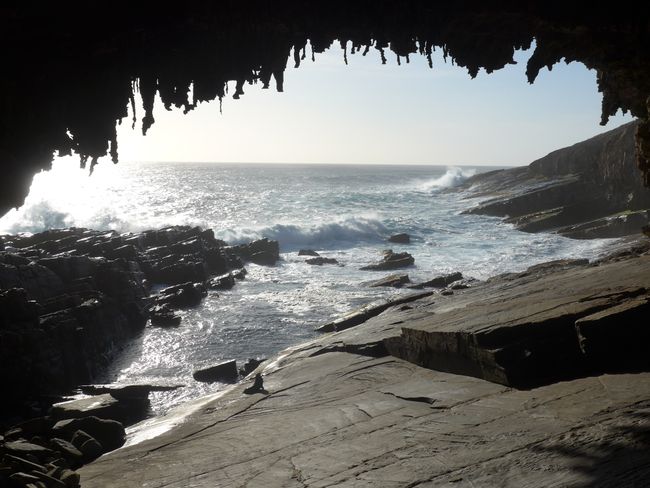
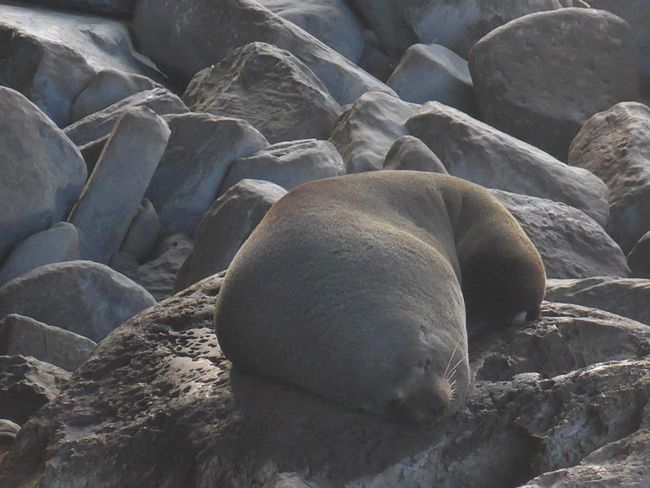
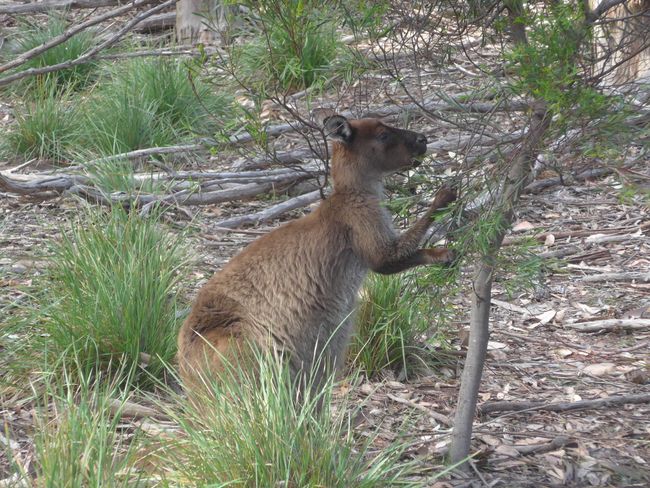
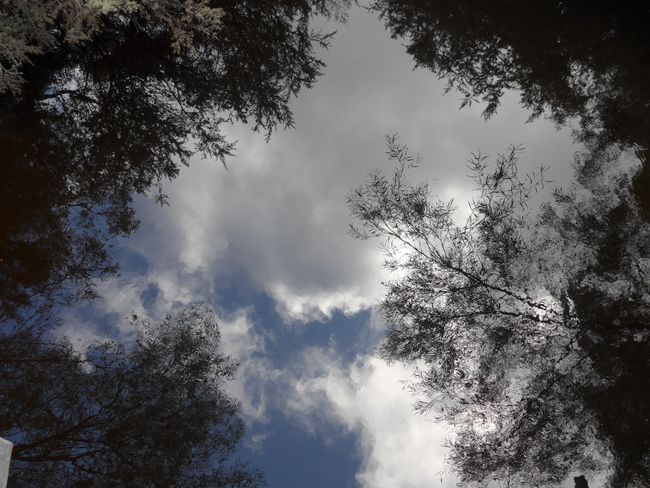
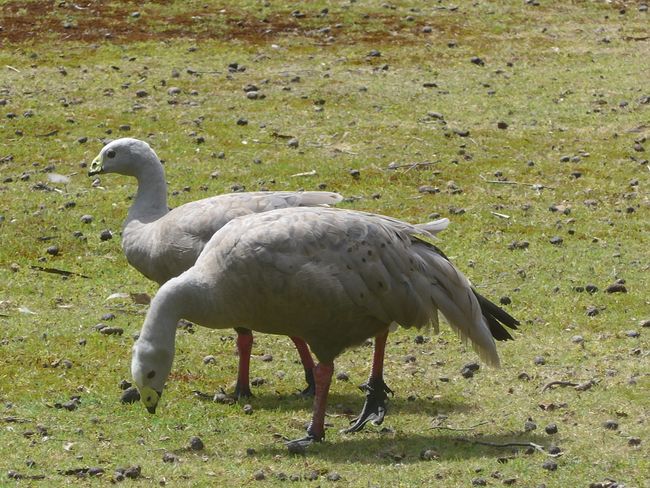
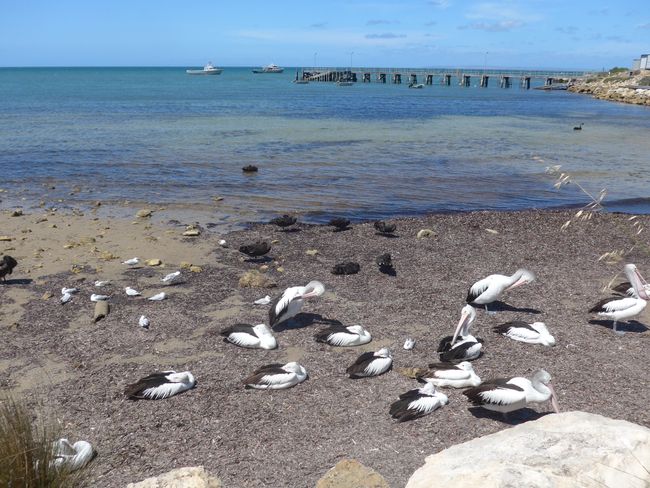
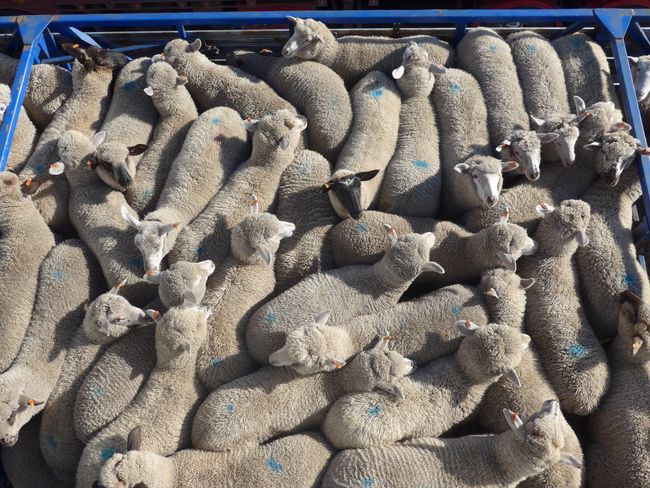
Misoratra anarana amin'ny Newsletter
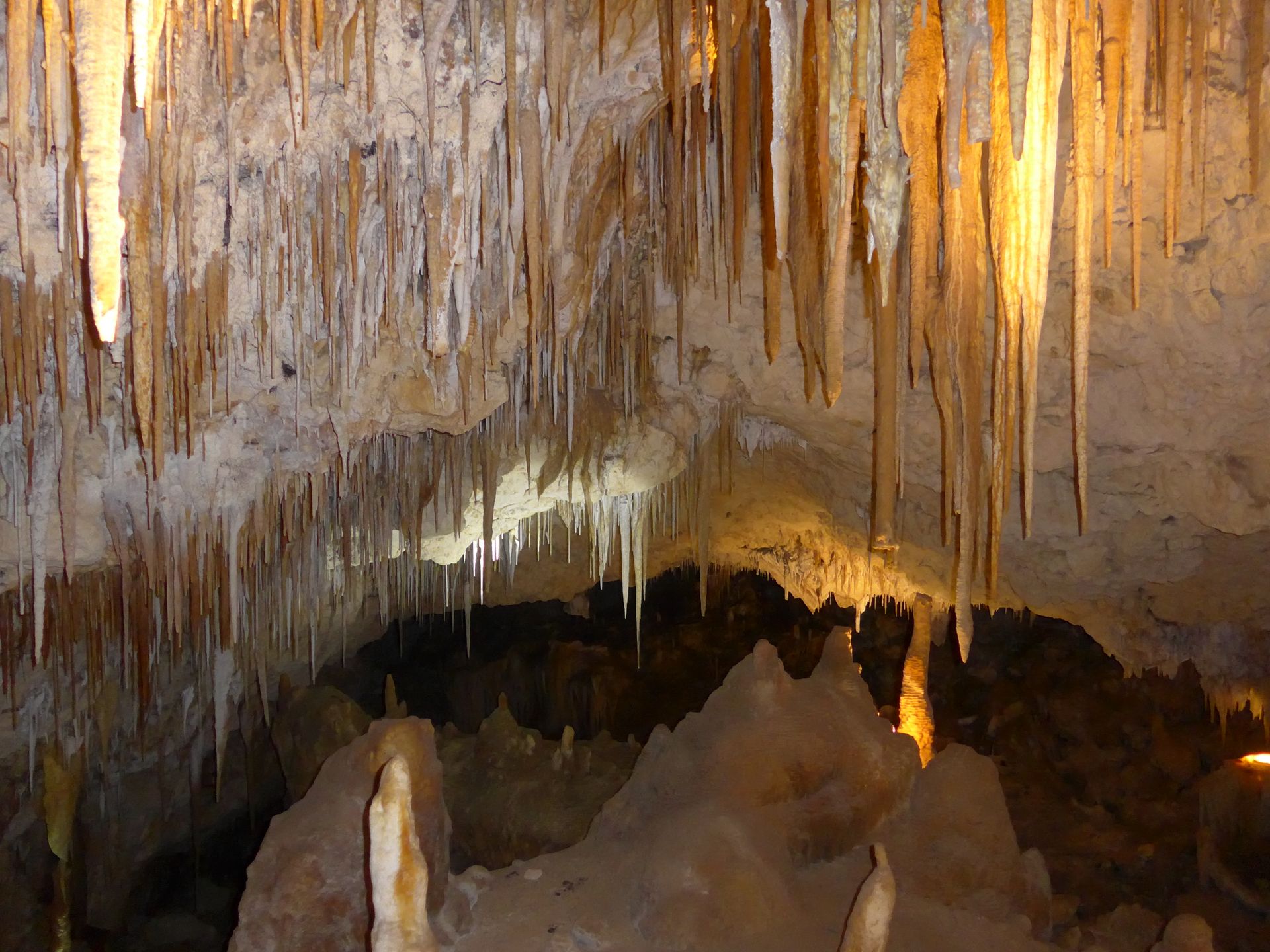
On the second full day, we first visited the Kelly Hill limestone caves. The mountain and cave were named after a horse that allegedly had an accident there and was never found again. However, it is not entirely certain whether the owner did not lose it gambling and did not want to tell his wife the true story...
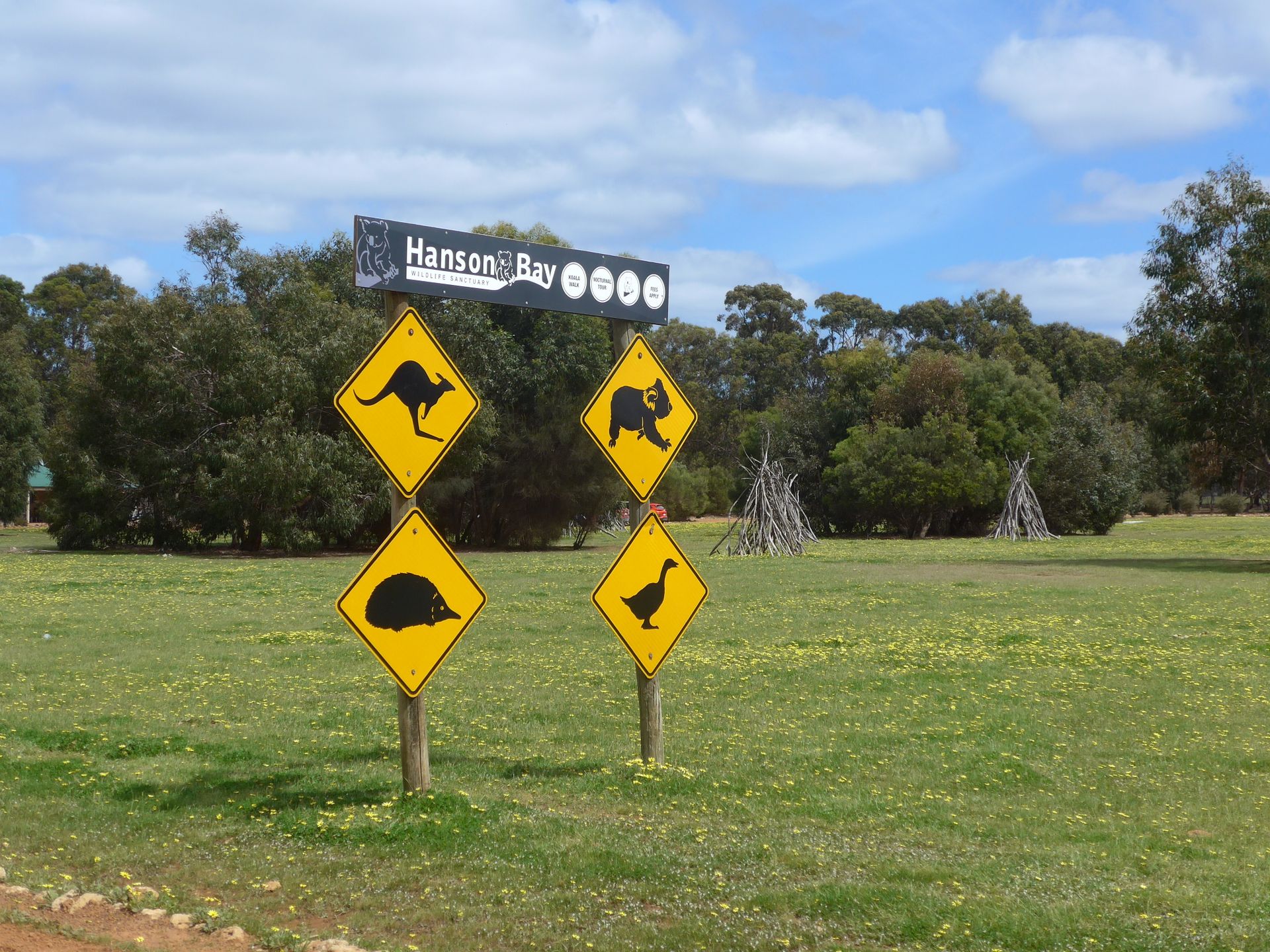
After exploring the underworld, we continued to the 'Hanson Bay Sanctuary', where you can see koalas in a eucalyptus alley. Some trees where koalas were sitting in the morning were marked with flags so that the animals could be found. With careful observation, you could also spot more furry balls in the trees... Since koalas sleep most of the day (18-20 hours) and eat the rest of the time, they were still sitting in the trees marked in the morning.
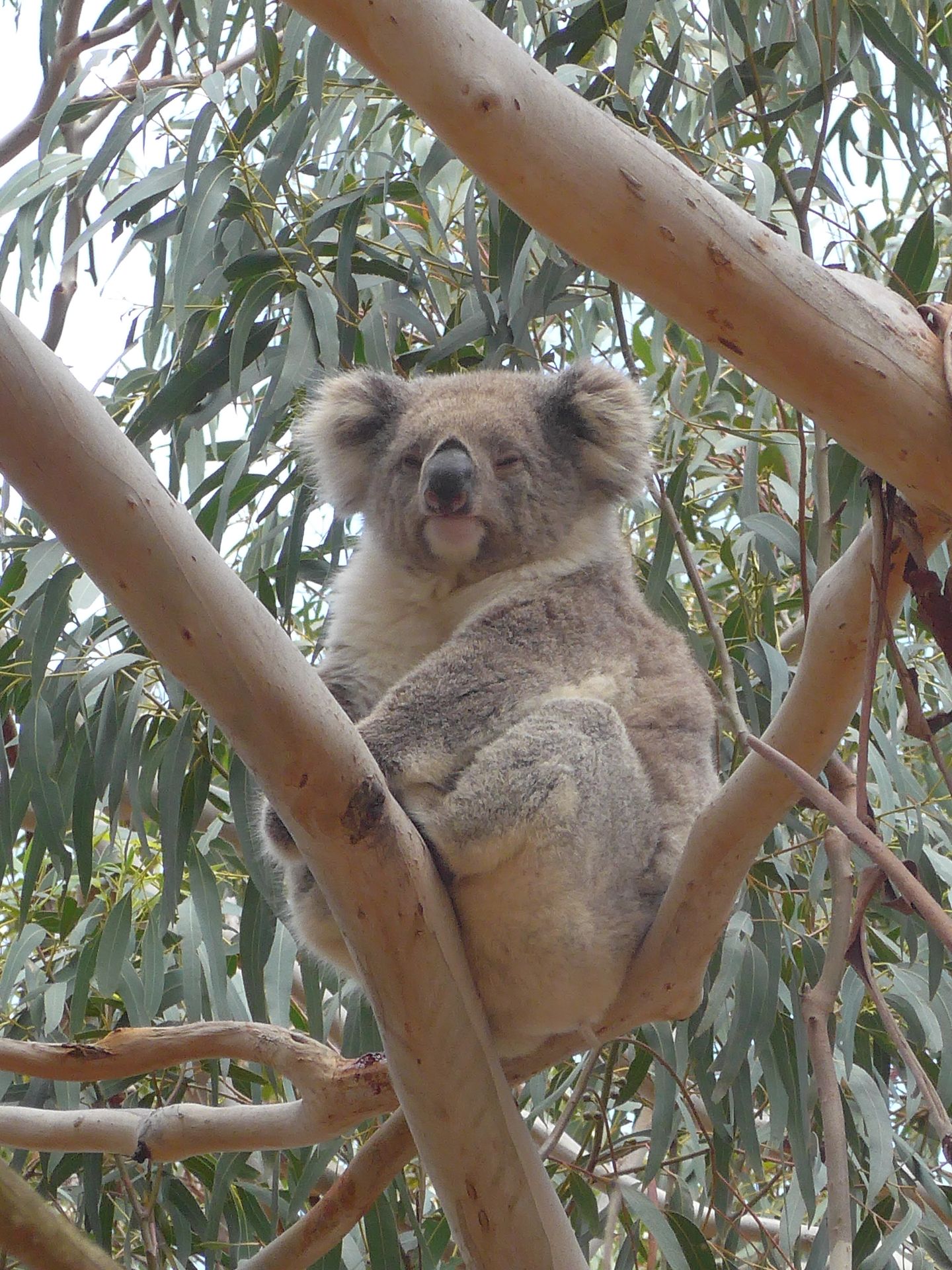
After the originally native koalas on Kangaroo Island had been wiped out, they were reintroduced in the 1920s because their extinction was feared.
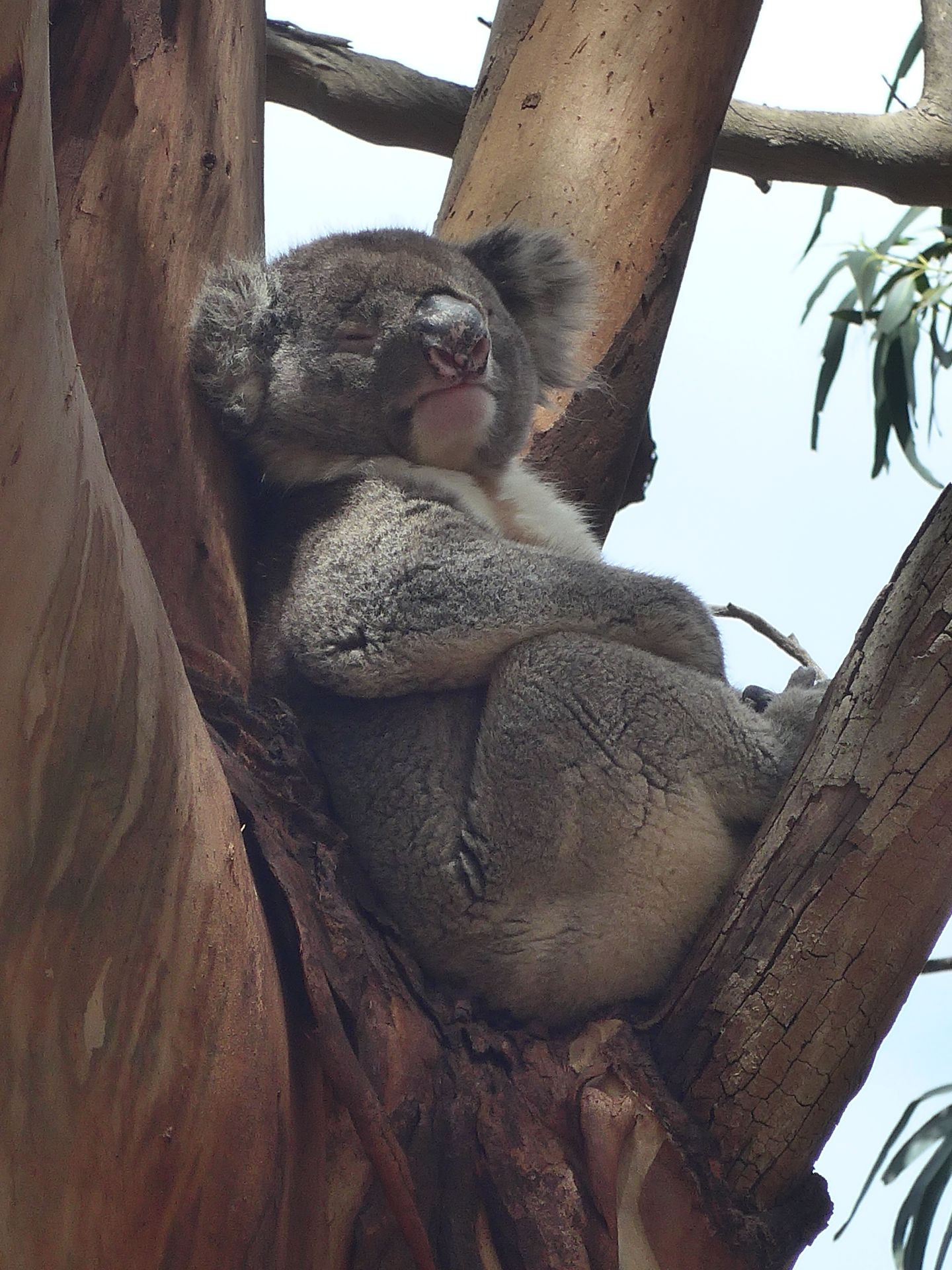
By now, the koala population on the island has recovered so well that there is even a sterilization program to ensure the supply of eucalyptus trees.

After spending a lot of time searching for koalas in trees, we also walked along the 'Wallaby Path' on the property, which led through diverse vegetation. Finally, we discovered the first kangaroos on Kangaroo Island on a meadow (apart from the one that had jumped over the road in front of our car in the morning, but unfortunately didn't stop for a photo).

In the afternoon, we drove to Flinders Chase National Park, located in the southwest of the island. We first explored the park's southern coast.
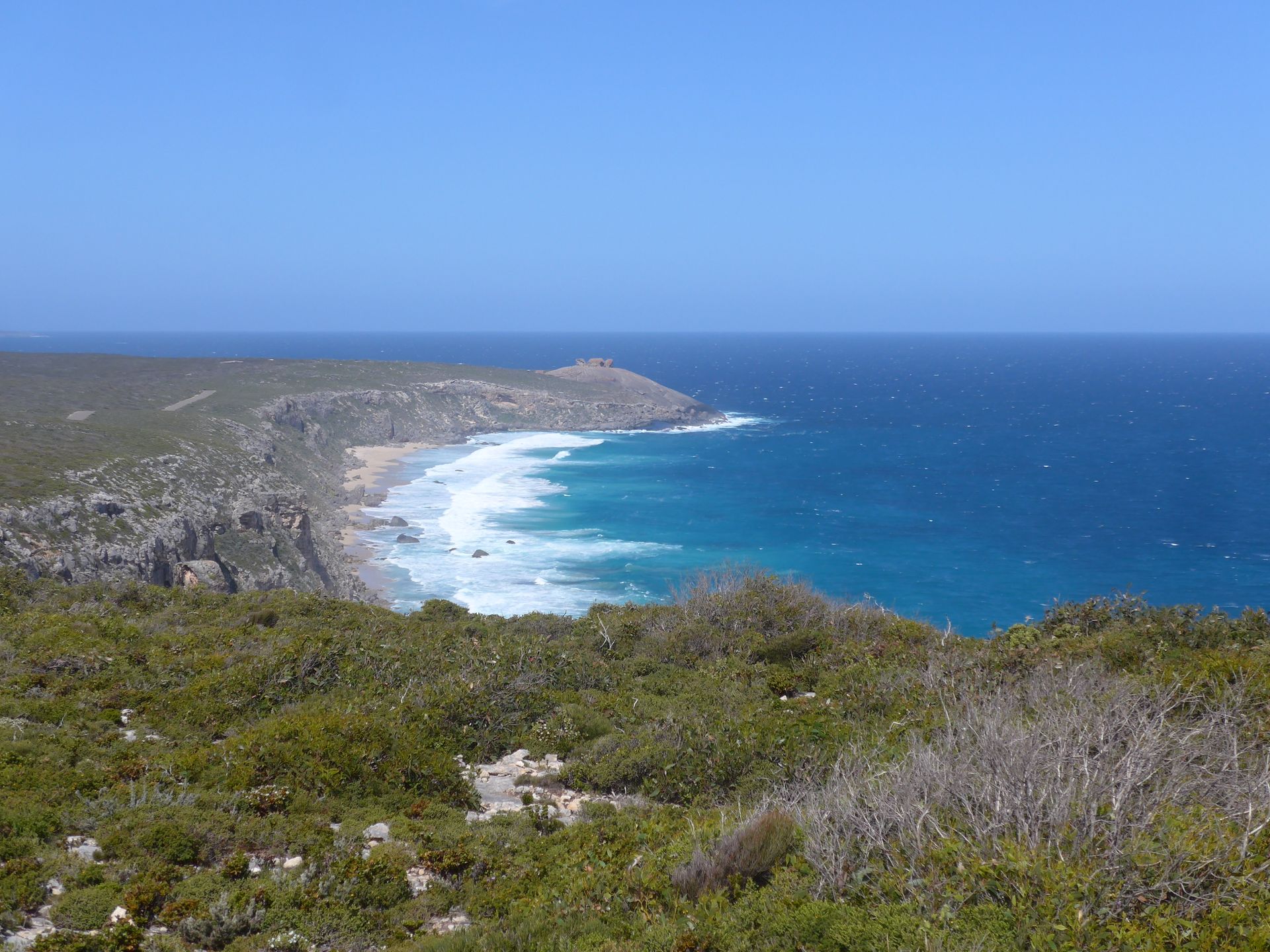
There you can find the 'Remarkable Rocks', truly remarkable rock formations created by wind and water erosion.
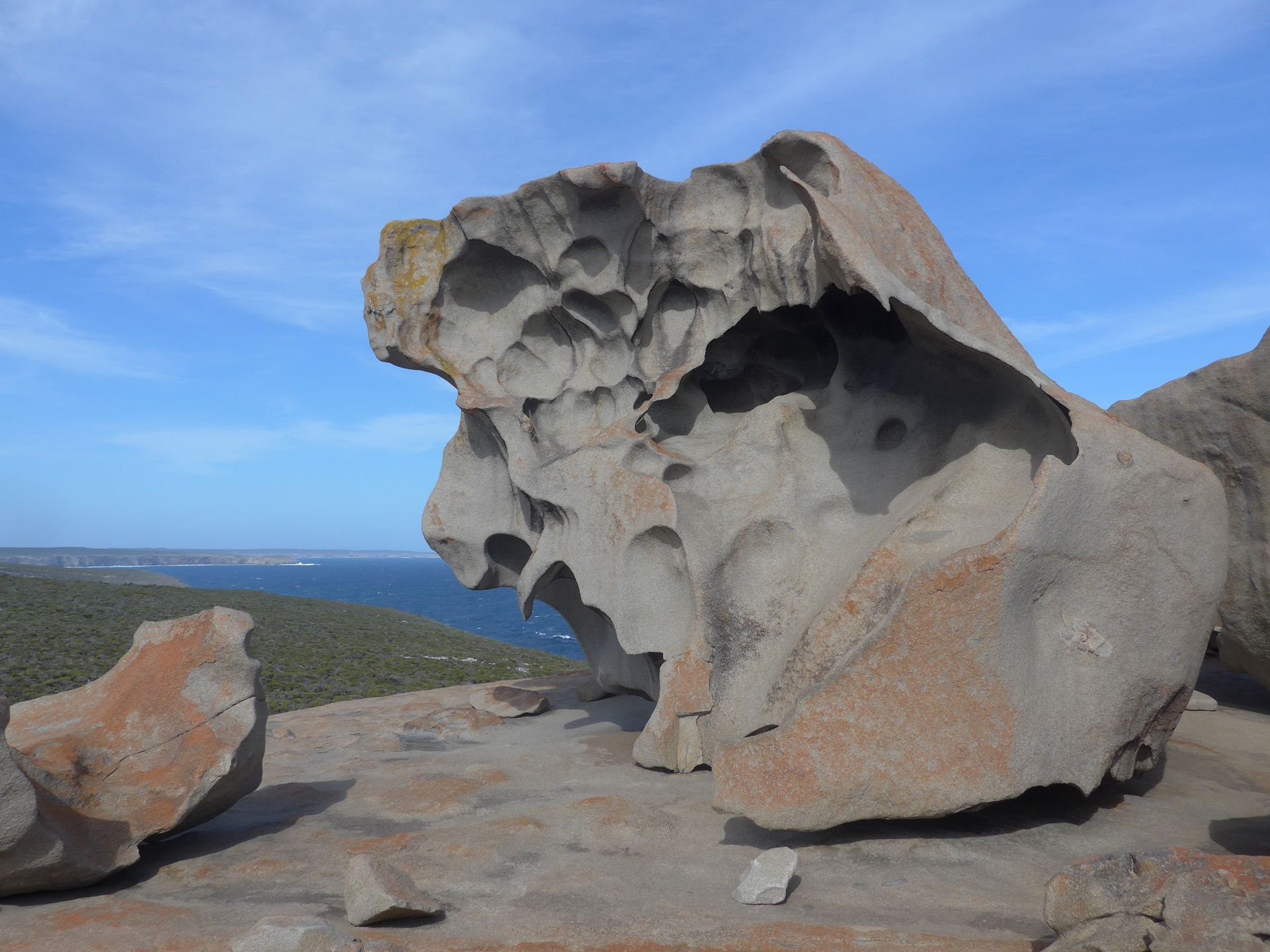
At the foot of the rocks, we again discovered an echidna, which was significantly larger than the one we had seen the day before.
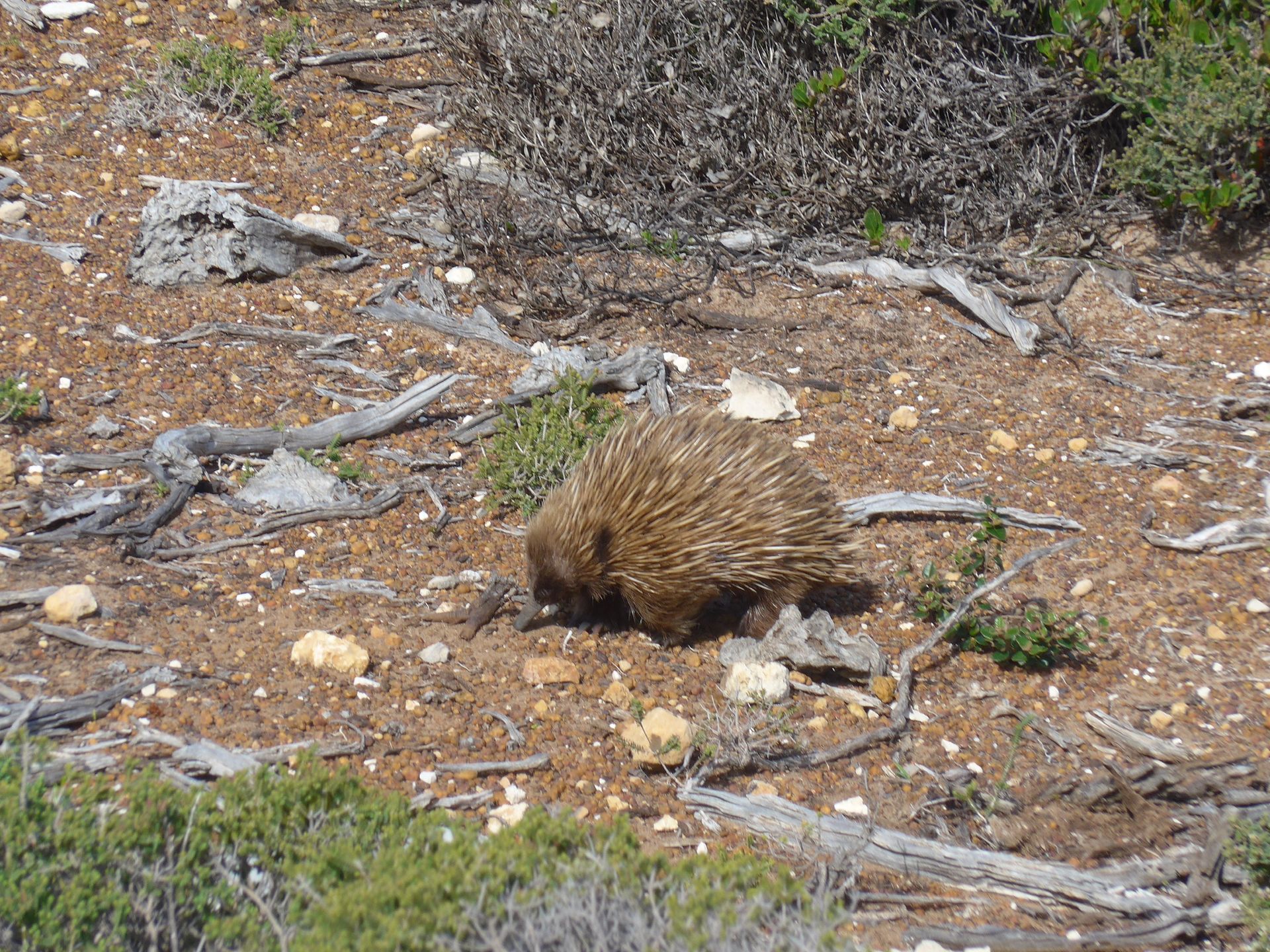
We then hiked from the lighthouse at the southern tip to the lighthouse keeper's house, where he lived with his family and was supplied by a ship only once every three months. However, he was allowed to bring his cat, which has now become a threat to the local wildlife as feral cats hunt smaller endangered species.
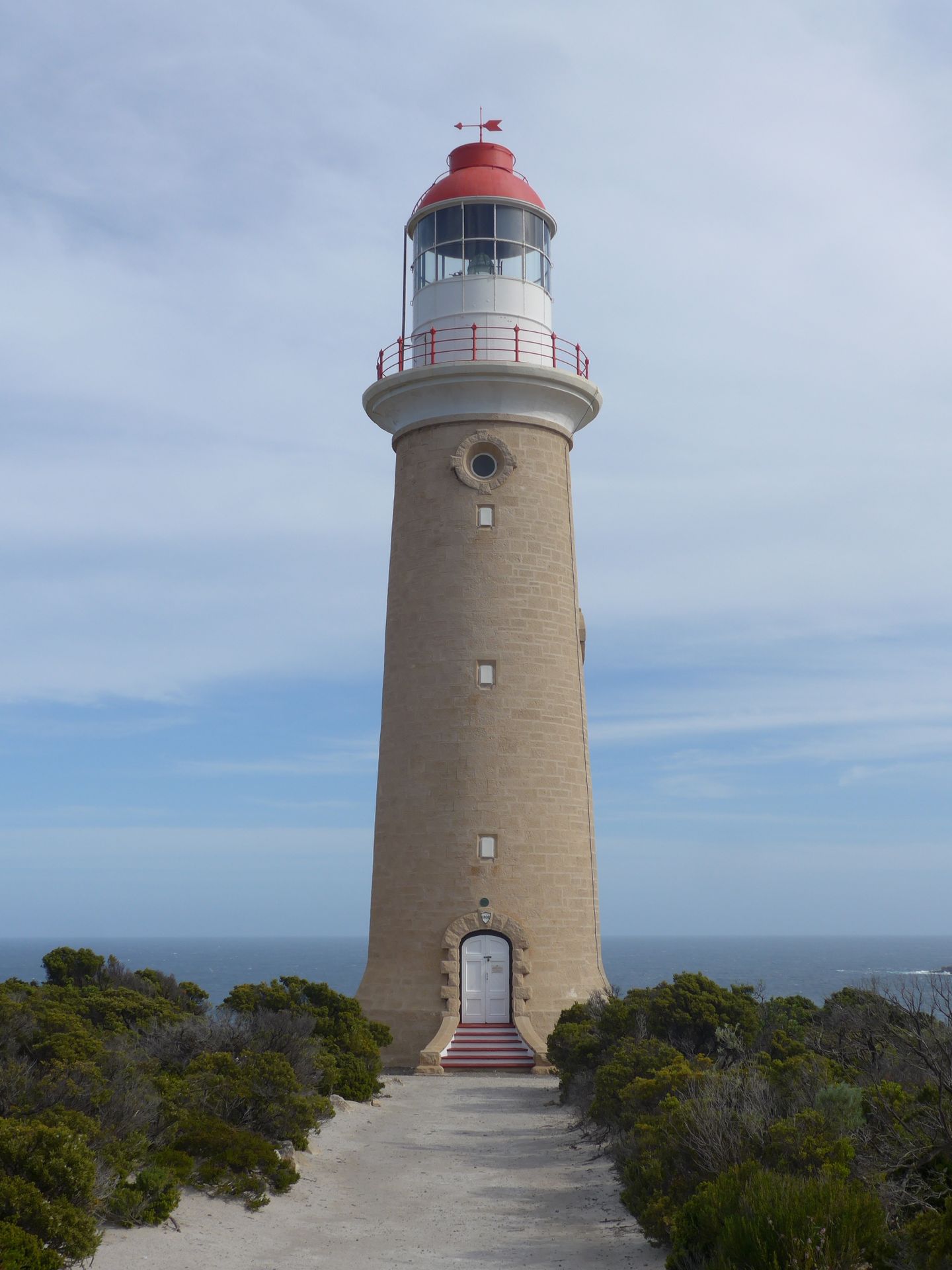
We then drove on to the end of the coastal road, where strong winds accompanied us on our way. The waves reached impressive heights, but this didn't seem to bother the New Zealand fur seals.
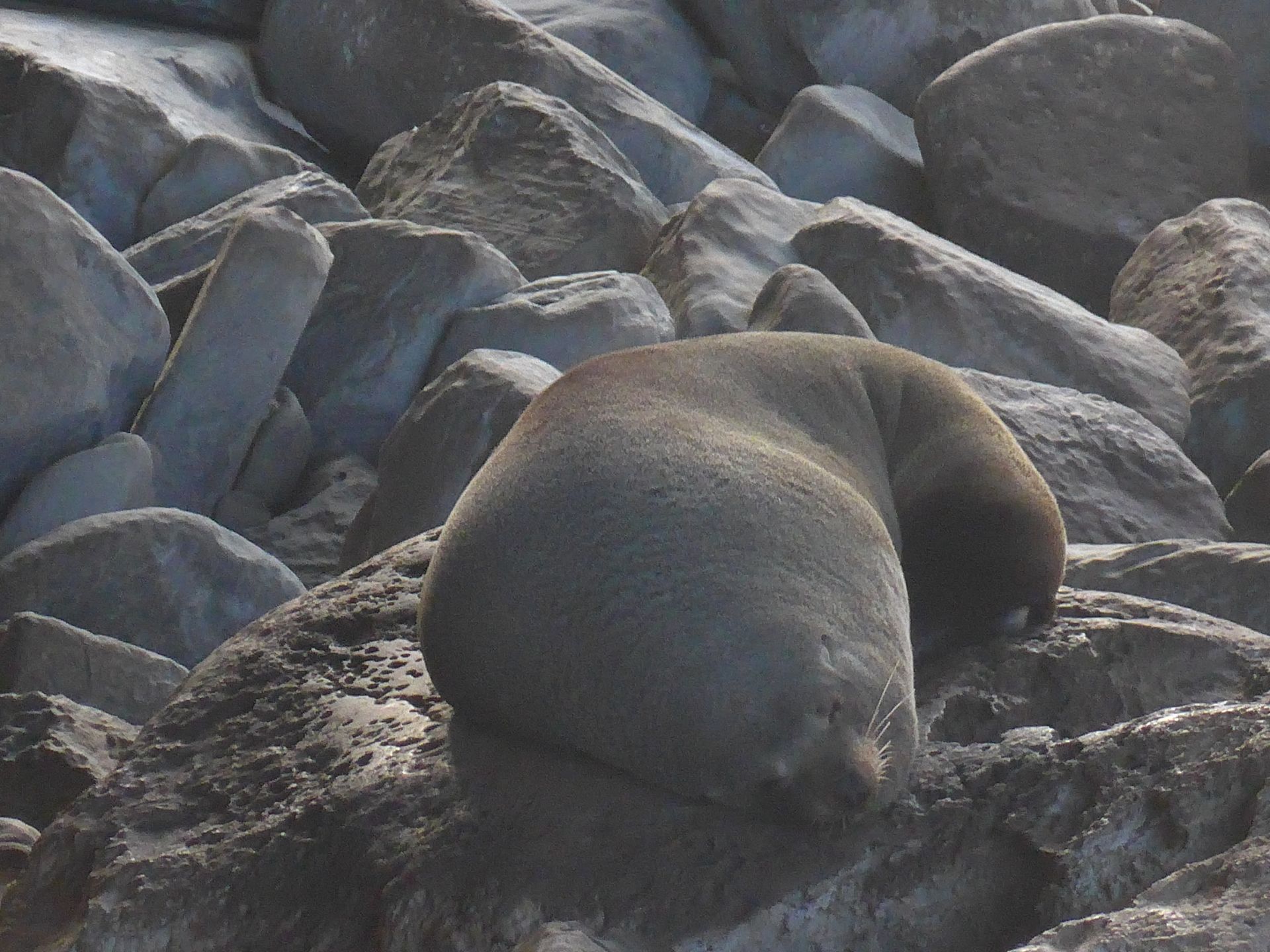
They swam or basked under the 'Admirals Arch', a naturally formed rock arch.
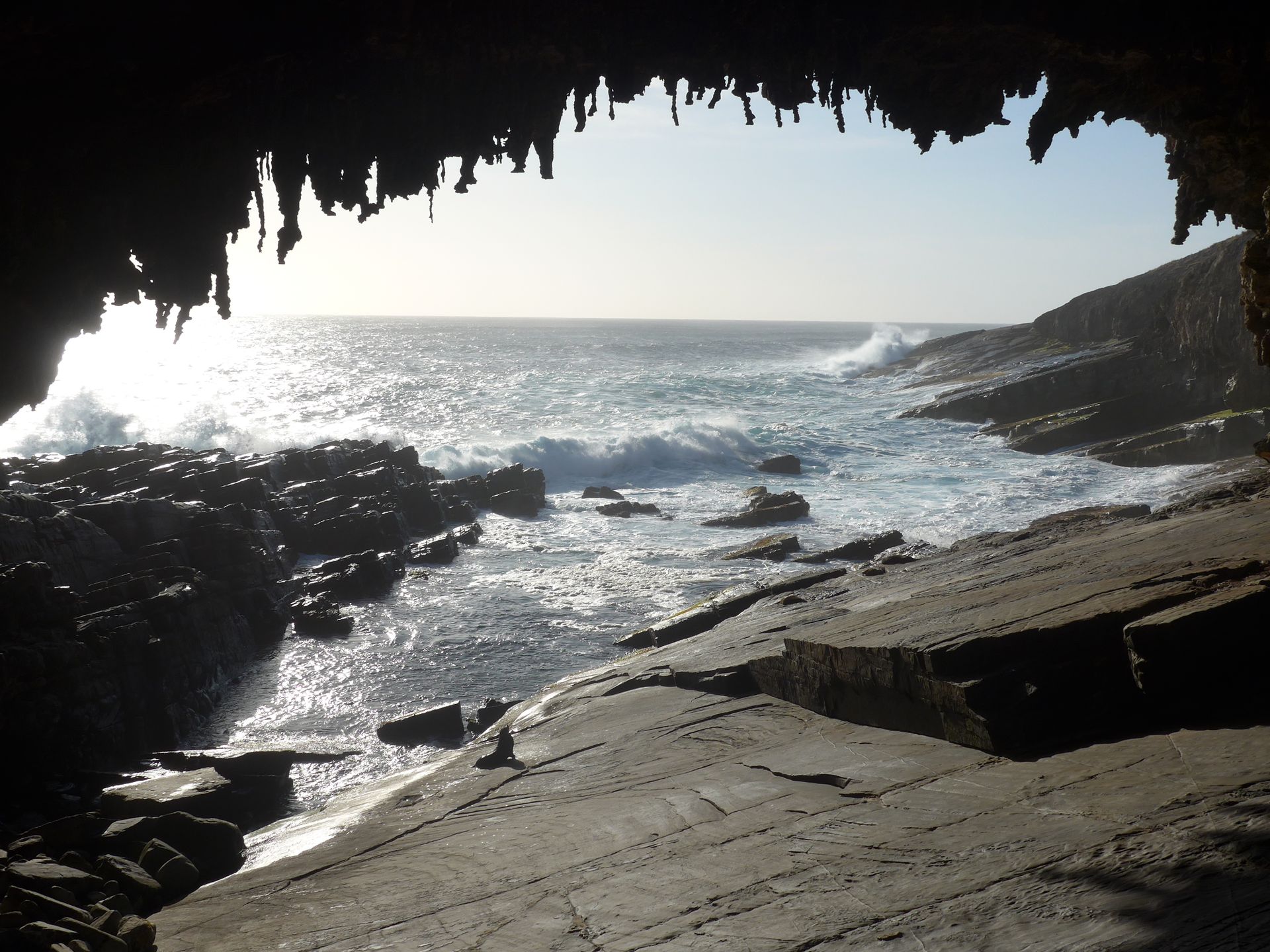
In the evening, we had kangaroo for dinner at a restaurant, where we tried kangaroo fillet. The next morning, we saw live kangaroos again when we started the 'Platypus Walk' in the national park.
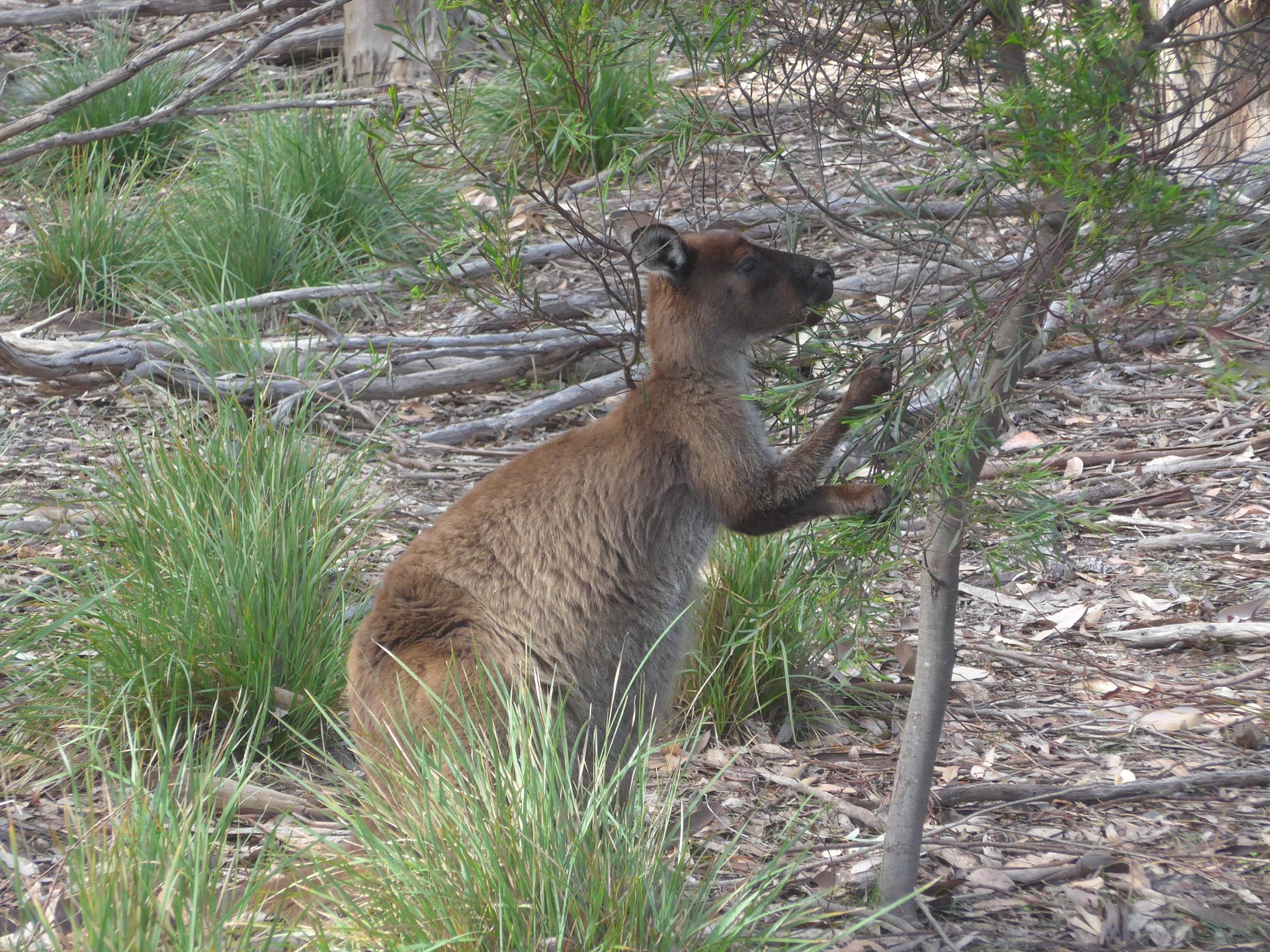
We went to all the waterholes but didn't see a platypus, which is not surprising since they are mostly active at night and very shy. Instead, we saw a lot of native hens.
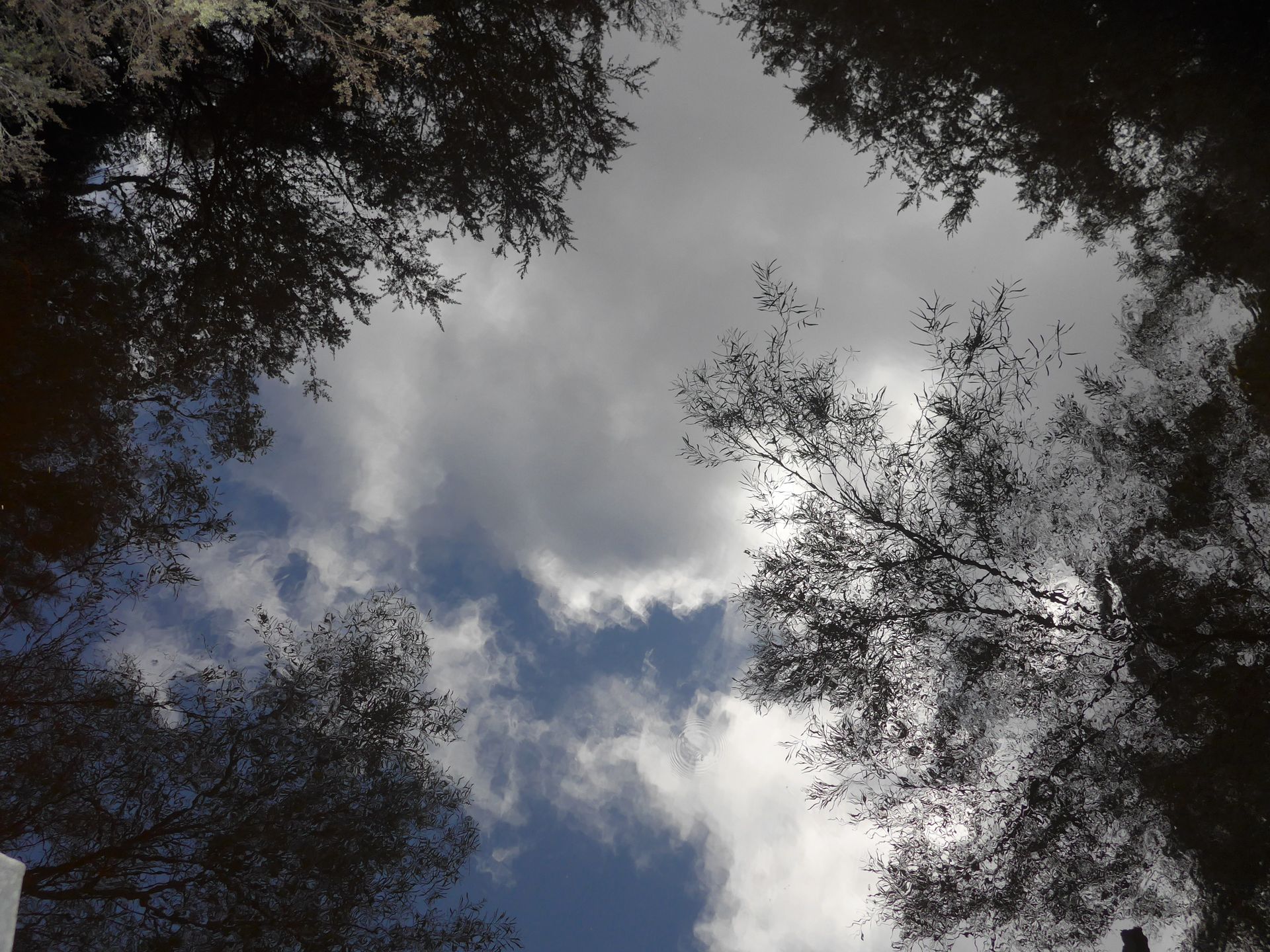
Reflection in the water
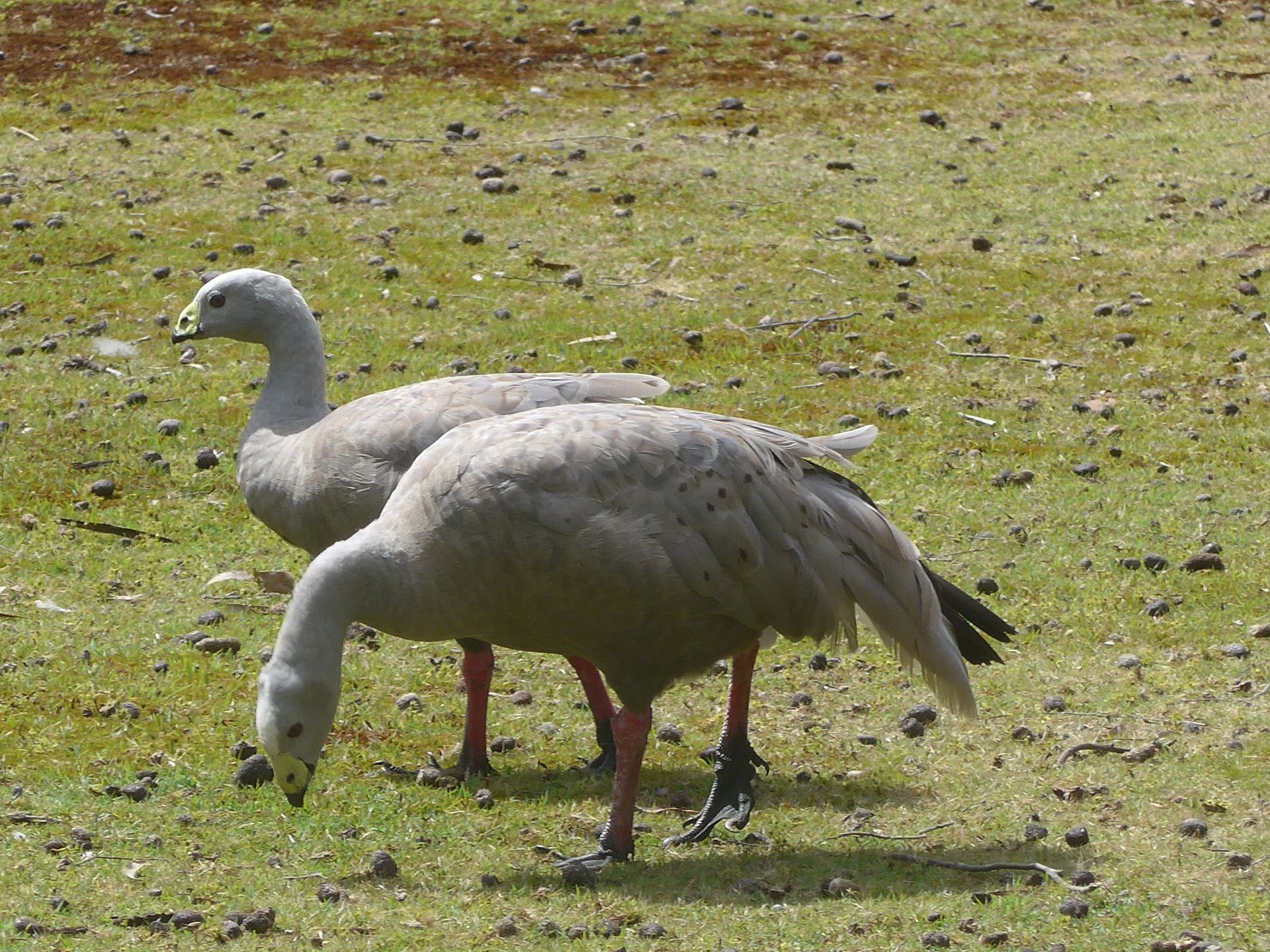
On the way back to the ferry, we made a little detour to Kingscote, where we watched pelicans and black swans at the harbor. After a delicious hot chocolate, we continued to Penneshaw.
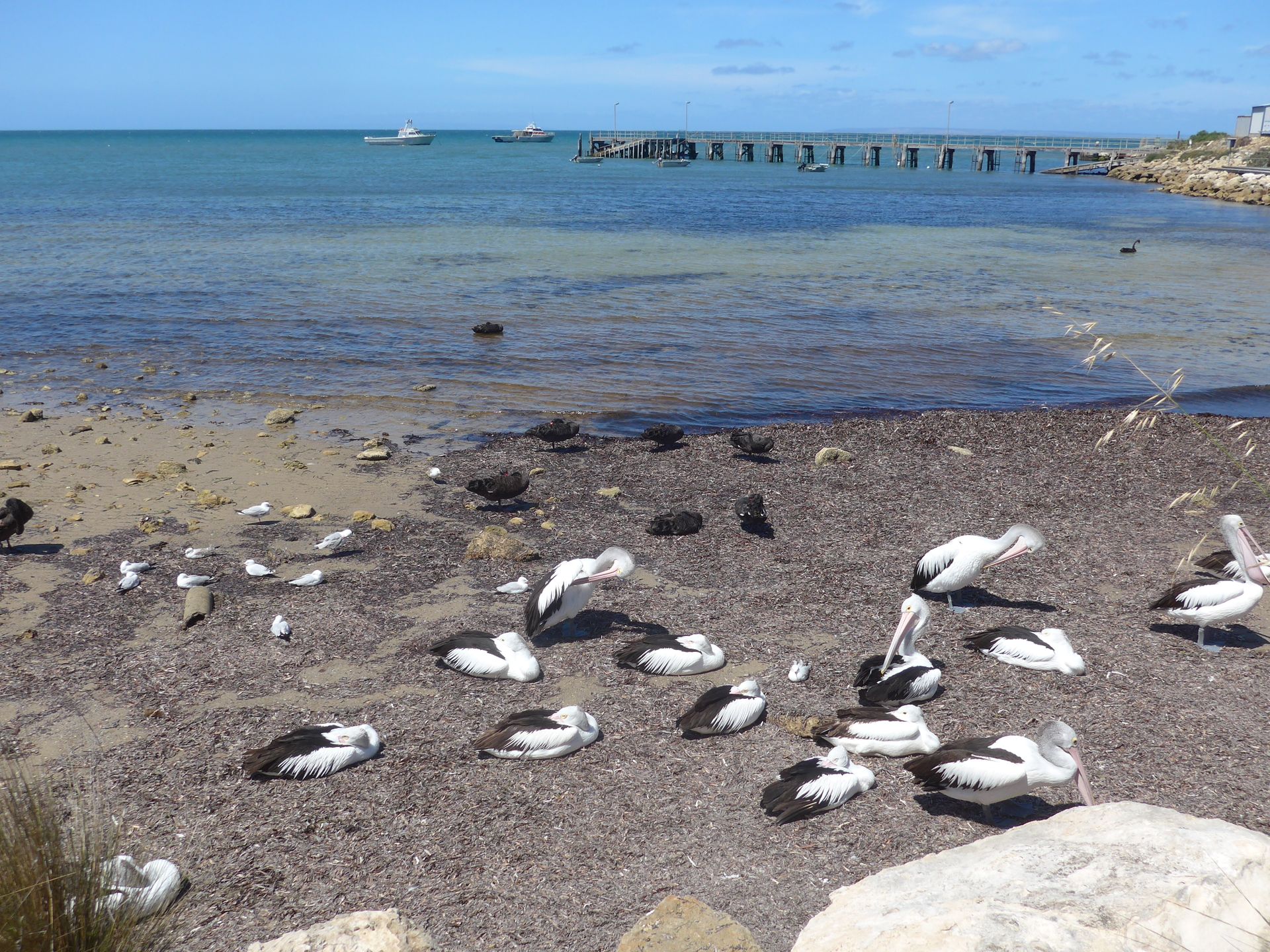
Parking on the ferry was even tighter than on the way there. Before departure, we admired the parking skills of the truck drivers who drove onto the ferry after us. On deck, there was the somewhat strong smell of two sheep transports with loud bleating, emitted by the sheep packed too tightly together.
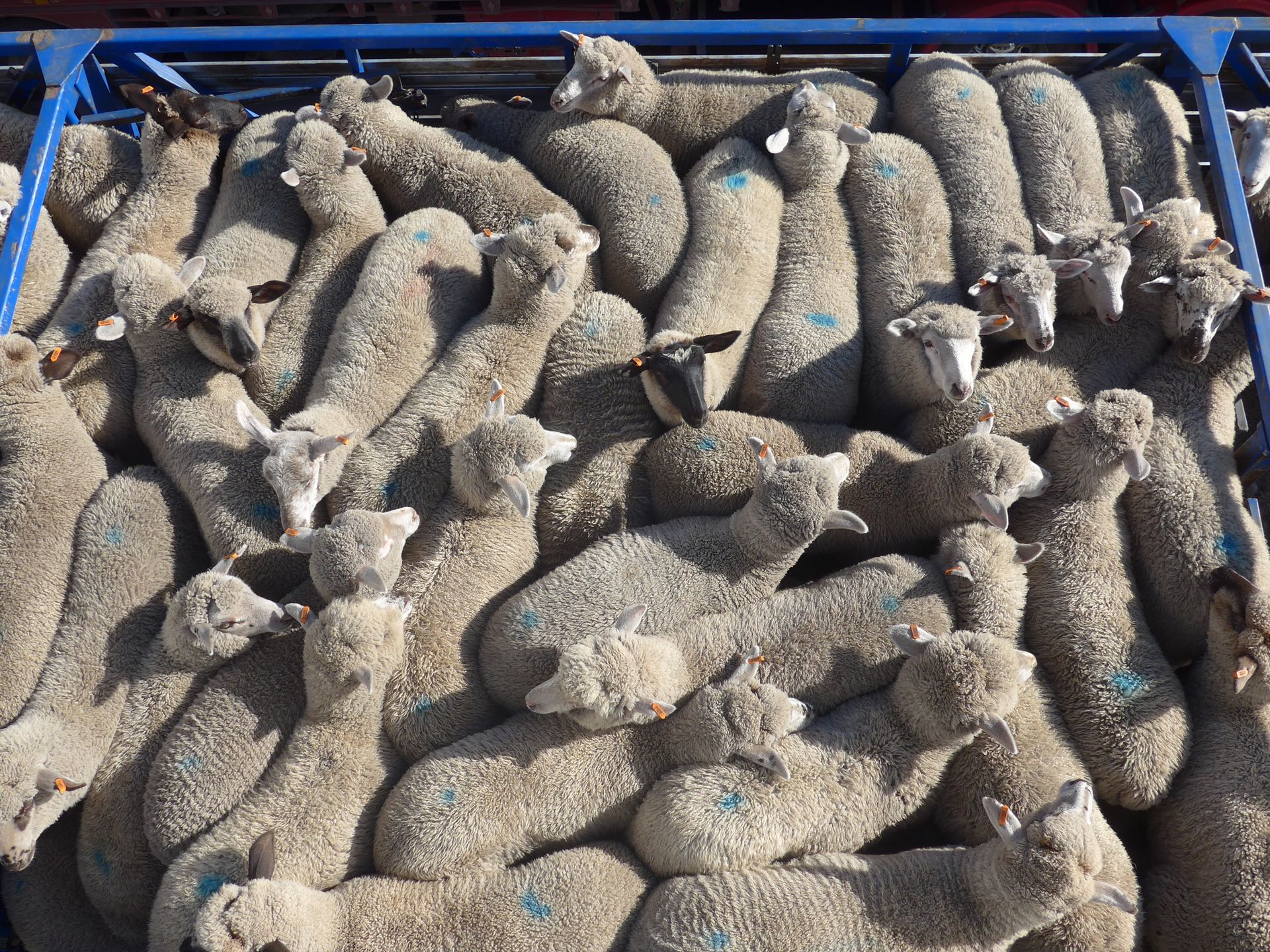
Misoratra anarana amin'ny Newsletter
Valio
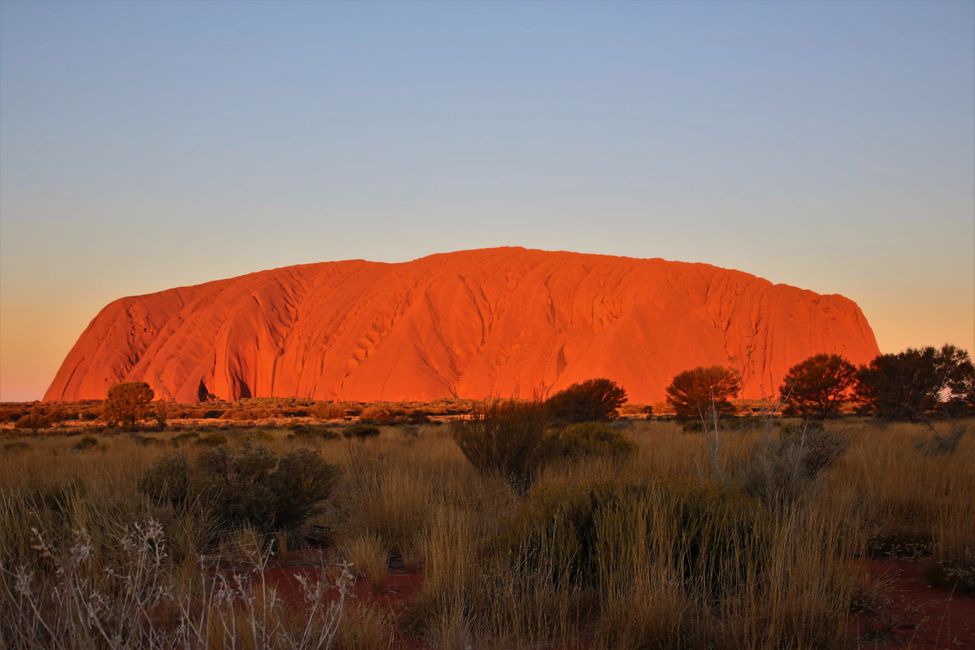
Tatitra momba ny dia AOSTRALIA
